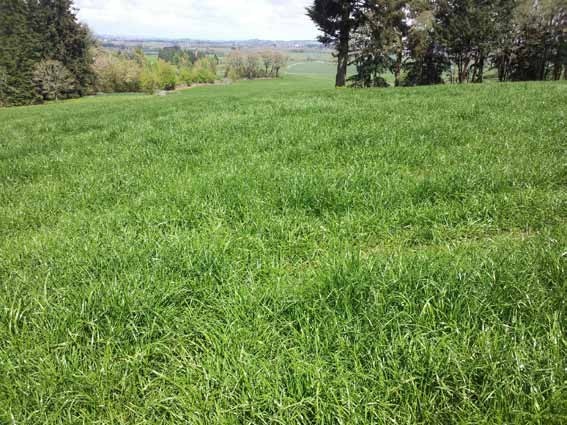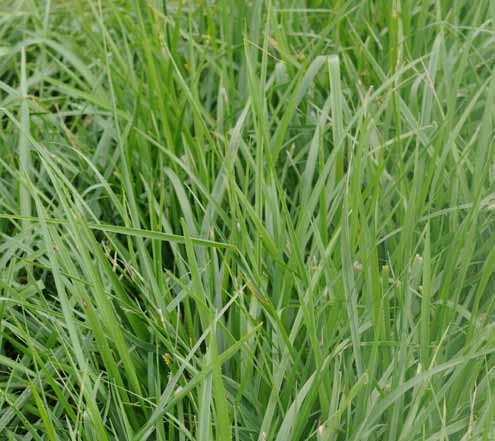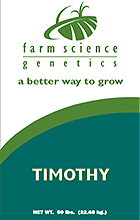
- Late maturity
- Strong summer re-growth after cutting
- High forage yield potential
- Very winterhardy
- Excellent forage quality
- Longer harvest window
- Dark green color
- Selected for excellent spring vigor and plant health
Express II is a late maturing timothy variety with a heading date approximately one week later than Climax and a substantial yield advantage. Express II is taller in plant height and has a longer panicle than Climax along with superior foliar disease resistance. Express II is excellent in mixtures with legumes and for fields where later hay harvests are required due to wet soil conditions. In pure stands, Express II’s high forage yield and quality makes it ideal for premium horse and other livestock hay

- Early maturity
- High forage yield potential
- Great forage quality
- Perfect for pure stands or with legumes and other grasses
- Improved summer regrowth
- Excellent spring vigor
- Very winterhardy
Conquest is an early maturing timothy variety, reaching 50% head emergence at approximately the same time as Clair and Summit and two weeks earlier than Climax. Conquest is similar in plant height and panicle length to Clair and Summit and is taller in plant height than Climax. Summit was bred for higher forage yields, greater foliar disease resistance, faster spring green up and improved summer regrowth. Conquest is ideally suited for pasture mixes, especially when used with alfalfa and can tolerate moderate continuous grazing, but does best under rotational grazing. Conquest is the hay and pasture grass of choice for horse and other livestock owners who demand high quality forage.
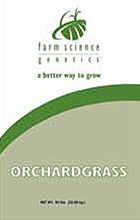
- Early-Medium Maturity
- Improved seedling vigor
- Superior foliar disease resistance
- Quick recovery
- Great forage yield potential
- Dark green color
- Excellent stand persistence
Bounty II is an early-medium maturing orchardgrass that is an excellent choice for hay, pasture and silage. This variety was selected for improved seedling vigor, high yield potential and excellent foliar disease resistance. Bounty II is ideal for planting straight or in mixes with other grasses and legumes.

- Leafy, high yielding, perennial forage grass
- Widely adapted
- Persistent
- Performs well on wet, poorly drained soil and soils with a pH below 6.0
- Very drought tolerant variety that can be used for hay, silage or pasture
- Low alkaloid
Marathon has short rhizomes that spread, creating a dense sod. It has greater winterhardiness and is more resistant to foliar disease than other cool-season grasses. Use Marathon for hay, silage or pasture. When cut for hay or silage, quality is optimal before seed heads appear and then rapidly declines. Forage yields are excellent in the spring and early summer and are fair to good in late summer and early fall. When used as pasture, grazing Marathon down to 3 to 4 inches above the ground will make the best utilization of the forage. Allow the grass to recover before regrazing, always keeping the grass below 12 inches tall during rapid spring growth.
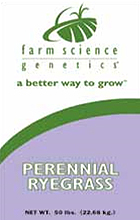
- Superior forage yield potential
- Excellent forage quality
- Vigorous, dark green plants with high disease resistance
- Excellent seedling vigor for fast stand establishment
- Winterhardy and persistent
Elena tetraploid perennial ryegrass is a medium maturing variety which has shown superior forage yield potential, excellent forage quality and longer persistence in state trials throughout the United States.
With strong spring and fall forage production plus fast recovery after cutting or grazing, Elena is the ideal component for horse, dairy or beef pasture mixes. Rapid germination and excellent seedling vigor makes this variety perfect for pasture renovation as well. Elena also has great rust and leaf disease resistance which helps maintain palatability and digestibility for improved animal performance.
When all of these varietal characteristics are added up, Elena is without a doubt the best choice for livestock and dairy producers looking for increased weight gains and milk production.
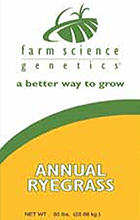
- Superior cold tolerance
- High forage yield
- Excellent for overseeding
- Ideal cover crop
- Great disease resistance
- Excellent palatability
Fria annual ryegrass not only delivers outstanding yields in the south and north, but has exceptional cold tolerance that helps in fall establishment and winter survival throughout the transition zone and further north. Developed by Dr. Gordon Prine at the University of Florida for cold tolerance, improved crown rust resistance and resistance to gray and helminthosporium leaf spot; Fria is a late maturing diploid variety.
For forage production, Fria is typically seeded into dormant warm season grass pastures or after wheat and corn silage harvest to provide grazing, hay, haylage or greenchop through the winter and spring. Recommended seeding rates are 20-25 pounds per acre drilled or 25-35 pounds per acre broadcast in the spring (March- April) or fall (August-early September). Fria provides consistent high quality forage production and excellent grazing under proper management. For hay or haylage, cut when the plant is between the boot and early head stage for optimum yield and quality. For grazing and green chop, start when Fria is 8 to 10 inches tall. Do not graze or greenchop lower than 3 inches.
As a cover crop, Fria can break up natural and manmade hardpans with its deep root penetration when planted in a continuous no-till rotation. Up to 30-90 pounds of nitrogen per acre can be provided for the following crop by recycling the nitrogen in the soil under no-till farming management as long as it is not harvested or grazed. The ability to capture and keep nitrogen and phosphorus in the soil profile after manure applications, preventing nutrient runoff is another big plus. Fria can also greatly reduce soil erosion, especially when planted after corn. Other benefits include reducing soybean cyst nematode populations and potential increased corn and soybean yields due to improved soil characteristics.
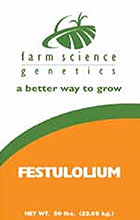
- Very high yielding
- Fast germination and establishment
- Vigorous regrowth
- Palatable and nutritious
- Minimizes summer slump
Gain is a vigorous, high yielding festulolium (meadow fescue x Italian ryegrass) which is ideally suited for silage and pasture production from the Pacific Northwest to the Atlantic Northeast states. Gain has a leafy growth habit producing forage that is highly palatable and digestible. Gain is a great choice when you need a fast-starting, high forage quality grass for silage or pasture, either mixed with legumes or as a pure stand.
Pure stand seeding rates are from 25 to 45 lbs. per acre. Seeding rates in mixtures are from 8 to 20 lbs. per acre. A seeding rate of 5 to 7 lbs. per acre may be used as a companion crop for establishing alfalfa, reed canarygrass or other slower starting species to provide faster ground cover plus additional quality forage during the first year or two after seeding. Festuloliums are best adapted to soils with high organic matter content and moisture levels. Forage yields are responsive 23 to nitrogen fertility rates.
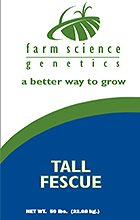
- High yielding, endophyte free
- Superior summer regrowth
- High grazing preference due to sugar content
- Great for winter stockpiling
- Excellent persistence and drought tolerance
- Wide area of adaptation
FSG 402TF is an endophyte free, medium maturing tall fescue variety which eliminates concerns about fescue foot, bovine fat necrosis and fescue toxicosis in cattle.
Two characteristics make FSG 402TF stand apart from other tall fescues; summer regrowth and disease resistance. Summer regrowth exceeds that of KY-31, Fawn and Max Q when averaged over all trial locations. This indicates better forage distribution throughout the growing season, reducing the summer slump that cool season grasses normally experience. Stem and Crown Rust data from FFR trials indicate FSG 402TF has significantly higher resistance to both diseases when compared to other commercial and experimental varieties.
With excellent summer regrowth, superior disease resistance, high forage yield potential and a wide area of adaptation, FSG 402TF will easily outperform other currently available tall fescue varieties.

- Superior yield
- Perfect for alfalfa or clover mixes
- Late maturity
- Increased stand persistence
- Stem Rust resistance
- Excellent plant vigor
- Great palatability
- Responds to irrigation
Extend is ideal for the grower looking for a late maturing orchardgrass to use in a pure stand or in grass-legume mixes. Extend’s performance is unrivaled for yield, forage quality, palatability, persistence and drought tolerance.
This superior performance combined with excellent plant vigor and stem rust resistance, makes Extend #1 in the field.

- Excellent drought tolerance
- Great forage yield potential
- High grazing tolerance
- Widely adapted
- Stem Rust resistant
Pawnee orchardgrass is a medium maturing variety developed for drought and grazing tolerance along with increased stem rust resistance and forage yield potential. This variety has a unique background, being selected from plants near Touchet, Washington, that survived five years of continuous grazing by horses, sheep and goats without fertilizer or irrigation. Pawnee is widely adapted, from the semi-arid west and plains to the midwest, northeast and south. In the west, Pawnee is superior to Paiute in forage yield under limited and full irrigation, while similar to Paiute in stand persistence. Whether used for grazing or forage, this workhorse variety has the adaptability and proven performance desired by farmers and ranchers.






